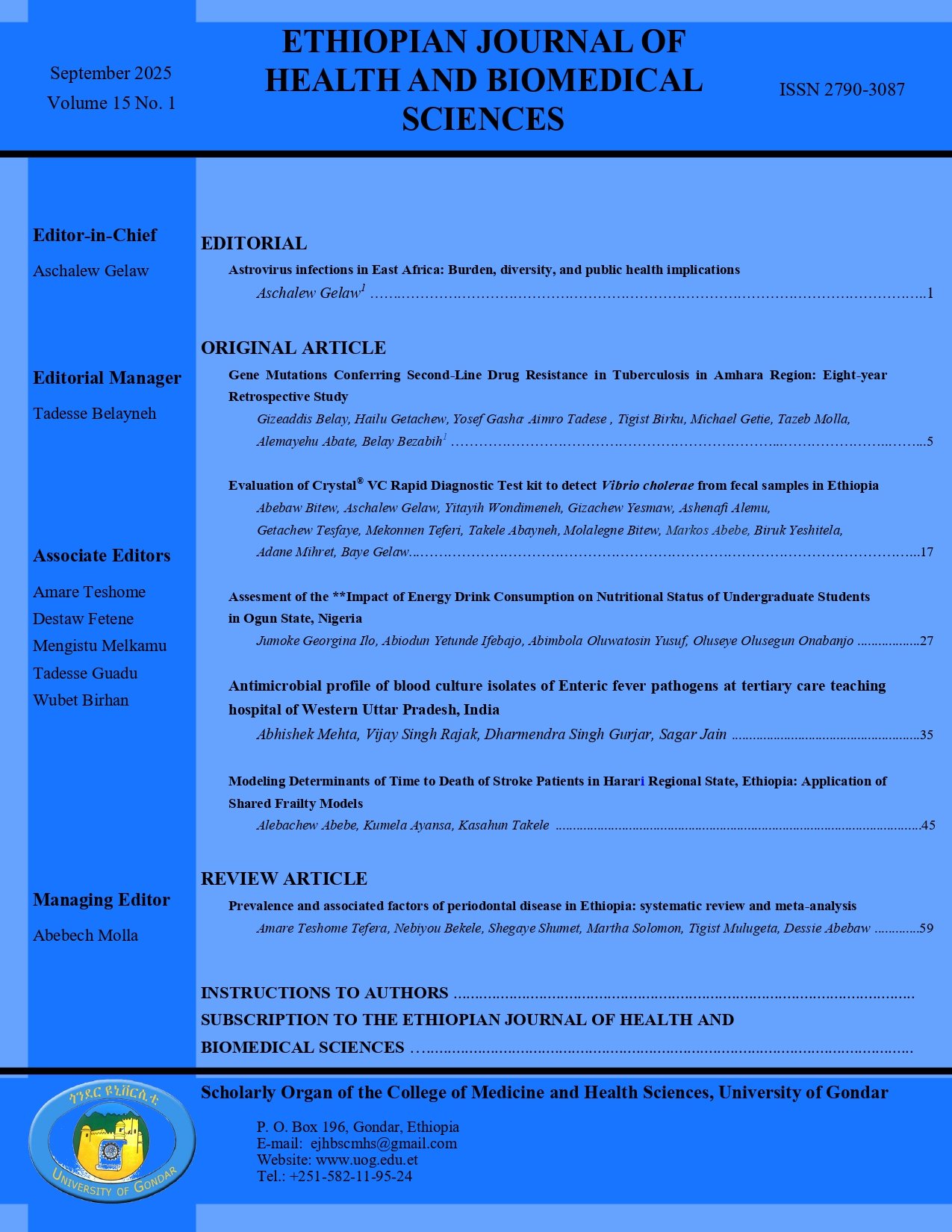Gene Mutations Conferring for Second-Line Drug-resistant Tuberculosis in Amhara Region: Eight-years Retrospective Study
DOI:
https://doi.org/10.20372/ejhbs.v15i1.1043Keywords:
MDRTB; MTBDRsI; LPA; Amhara Region; Gene MutationAbstract
Background: Tuberculosis (TB) is an infectious disease that can affect various organs, though it primarily targets the lungs. The global emergence of highly drug-resistant TB strains has significantly undermined treatment and control efforts. Resistance in Mycobacterium tuberculosis is mainly attributed to spontaneous mutations in chromosomal genes. However, data on specific gene mutations associated with second-line drug resistance remain limited in the Amhara Region of Ethiopia.
Objective: This study aimed to assess the gene mutations associated with second-line drug-resistant tuberculosis among patients in the Amhara Region, Northwest Ethiopia.
Method: A retrospective study was conducted from January 1, 2016, to January 30, 2023. Drug resistance-associated gene mutations were identified using the Genotype MTBDRsl line probe assay. Data were analyzed using SPSS version 26 statistical software. Chi-square test were applied to examine associations between gene mutations and socio-demographic characteristics, with a significance level set at p < 0.05.
Result: A total of 308 presumptive multidrug-resistant TB (MDR-TB) patients were tested for second-line drug susceptibility. Of these, 165 (53.6%) were male, and the majority (n = 177, 57.5%) were aged 25 - 44 years. HIV co-infection was observed in 41 (13.3 %) patients. Fluoroquinolone (FLQ) resistance due to gyrA mutation at position A90V was identified in 1 (0.3%) isolate. Resistance to second-line injectable drug was observed in 10 (3.2%) isolates, indicated by missing wild-type (WT) bands or mutations in the rrs gene. Among these, 2 (0.6%) had rrs mutations at position A1401G, and 1 (0.3%) at position G1484T. HIV status was significantly associated with FLQ-resistant TB (χ² = 5.42, p = 0.02), and the year of testing was significantly related to the prevalence of resistance to second-line injectable drugs (χ² = 13.71, p= 0.05).
Conclusion: This study highlights the presence and distribution of gyrA and rrs gene mutations associated with second-line drug resistance in M. tuberculosis isolates from the Amhara Region. The significant association between HIV status and FLQ-resistance underscores the need for integrated TB-HIV management. Routine molecular testing for resistance-conferring mutations is recommended prior to initiating fluoroquinolones and second-line injectable drugs in MDR-TB patients.
Downloads
Published
How to Cite
Issue
Section
License
Copyright (c) 2025 Gizeaddis Belay Mersha, Mekonnen, Bogale, Kebede, Amera, Abate, Tazeb Molla, Alemayehu Abate, Belay Bezabih

This work is licensed under a Creative Commons Attribution-NonCommercial 4.0 International License.


